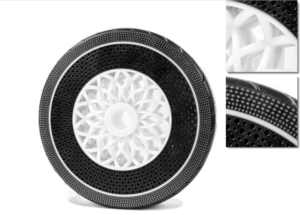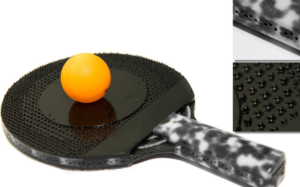 While there are many benefits to be derived from 3D printing, such as infinite opportunities for innovation and then customization, speed in production, increased efficiency in workflow, and affordability, the industry and research community also has the benefit of being driven by those who are makers themselves and want to strive to see what more they can do. And that means they are constantly looking for ways to refine the processes of digital design and fabrication so that they too can create more with the technology that just seems to expand with new options continually. The problem is that many machines and materials aren’t always that easy to use or even realistic for most of us to consider, whether that is due to challenge or cost.
While there are many benefits to be derived from 3D printing, such as infinite opportunities for innovation and then customization, speed in production, increased efficiency in workflow, and affordability, the industry and research community also has the benefit of being driven by those who are makers themselves and want to strive to see what more they can do. And that means they are constantly looking for ways to refine the processes of digital design and fabrication so that they too can create more with the technology that just seems to expand with new options continually. The problem is that many machines and materials aren’t always that easy to use or even realistic for most of us to consider, whether that is due to challenge or cost.
Take multi-material and multi-color 3D printing. While we hear about this more and more, how much of it are you actually doing and how much are manufacturers actually expecting from today’s users with what is currently available? According to the very busy team at MIT’s Computer Science and Artificial Intelligence Lab (CSAIL), while processes may be available for using multiple materials in 3D printing, models are still complex to design, and there was obviously the need for an interface that is easier for everyone to use. With that in mind, they’ve created Foundry, a tool for creating models to be printed in multiple materials.
 Once you’ve designed your object and exported it, Foundry allows you to create a graph contained around 100 ‘fine-tuned actions.’ These actions are referred to as operators, and Foundry relies on a system of them to shape 3D models, performing functions such as:
Once you’ve designed your object and exported it, Foundry allows you to create a graph contained around 100 ‘fine-tuned actions.’ These actions are referred to as operators, and Foundry relies on a system of them to shape 3D models, performing functions such as:
- Subdividing objects into different materials
- Remapping coordinate systems
- Assigning specific physical properties to different parts of an object
Not only that, as you change properties, an interactive preview is constantly updated to show you the current settings. Operators can also be ‘chained together’ as you are mixing and matching materials and setting properties. The system is fine-tuned and allows you to print with multiple materials at a fine resolution.
“In traditional manufacturing, objects made of different materials are manufactured via separate processes and then assembled with an adhesive or another binding process,” says first author Kiril Vidimče, PhD. “Even existing multi-material 3D printers follow a similar workflow: parts are designed in traditional CAD systems one at a time and then the print software allows the user to assign a single material to each part.”
“It’s like Photoshop for 3D materials, allowing you to design objects made of new composite materials that have the optimal mechanical, thermal and conductive properties that you need for a given task. You are only constrained by your creativity and your ideas on how to combine materials in novel ways.”
“3-D printing is about more than just clicking a button and seeing the product,” he continues. “It’s about printing things that can’t currently be made with traditional manufacturing.”
The team, headed by Vidimče, outlined their findings in ‘Foundry: Hierarchical Material Design for Multi-Material Fabrication,’ also authored by MIT professor Wojciech Matusik and students from his Computational Fabrication Group: PhD student Alexandre Kaspar and former graduate student Ye Wang.
“We used Foundry to design and fabricate several functional examples that demonstrate the versatility of the system and the ability to quickly build objects with complex material designs,” stated the researchers in their paper.
 Using Foundry, they designed the following:
Using Foundry, they designed the following:
- Skis with retro-reflective surfaces
- A ping-pong paddle
- Tricycle wheel
- Helmet
- 3D printed bone
As the research team and a novice user worked together, they designed and then 3D printed the models using a Stratasys Connex 500, which is able to print with two materials at once, as well as a support material. The team printed with Vero Clear (a transparent, rigid material), VeroWhite+ (a white, rigid material) and TangoBlack+ (a black, rubber-like material).
“We have demonstrated system use by creating and fabricating a number of functional objects. We think that Foundry will be used for a wide range of applications as multi-material printing becomes a commodity,” state the researchers. “For future work, we believe that coupling Foundry with a multi-physics simulator could be very beneficial. The simulation could inform users whether their design goals are met.”
“Foundry is currently a stand-alone tool but we envision integrating it into an existing modeling package. This will make Foundry better integrate into existing work-flows, allow for an iterative design over both the geometry and the material definition and would let us leverage existing geometric tools in the target modeling package.”
As the Foundry system stands, it currently allows for 3D designs to be created in the fraction of a time it would take with traditional design tools—often allowing for that which simply was not possible before. Now, innovations can be created in just a few minutes.
“3D printing is about more than just clicking a button and seeing the product,” says Vidimče. “It’s about printing things that can’t currently be made with traditional manufacturing.”
The research team will present their findings later this week at the Association for Computing Machinery’s User Interface Software and Technology Symposium (UIST) in Tokyo. Check out the video below for more details on Foundry. Discuss further over in the MIT CSAIL Foundry System Aids in 3D Design forum at 3DPB.com.
[Source: MIT CSAIL / Images: Kiril Vidimče, MIT CSAIL]
Subscribe to Our Email Newsletter
Stay up-to-date on all the latest news from the 3D printing industry and receive information and offers from third party vendors.
Print Services
Upload your 3D Models and get them printed quickly and efficiently.
You May Also Like
The Dental Additive Manufacturing Market Could Nearly Double by 2033, According to AM Research
According to an AM Research report from 2024, the medical device industry, specifically in dentistry, prosthetics, and audiology, is expected to see significant growth as these segments continue to benefit from...
Heating Up: 3D Systems’ Scott Green Discusses 3D Printing’s Potential in the Data Center Industry
The relentless rise of NVIDIA, the steadily increasing pledges of major private and public investments in national infrastructure projects around the world, and the general cultural obsession with AI have...
AM Research Webinar Explores Continuum’s Sustainable Metal Additive Manufacturing Powders
Metal additive manufacturing (AM) powder supplier Continuum Powders is working to develop solutions that empower industries to reduce waste and optimize their resources. An independent life cycle assessment (LCA) of...
3D Printed Footwear Startup Koobz Lands $7.2M in Seed Round
California-based Koobz is focused on reshoring the U.S. footwear supply chain with advanced manufacturing processes, including 3D printing. The startup just announced that it has added $6 million to its...


































